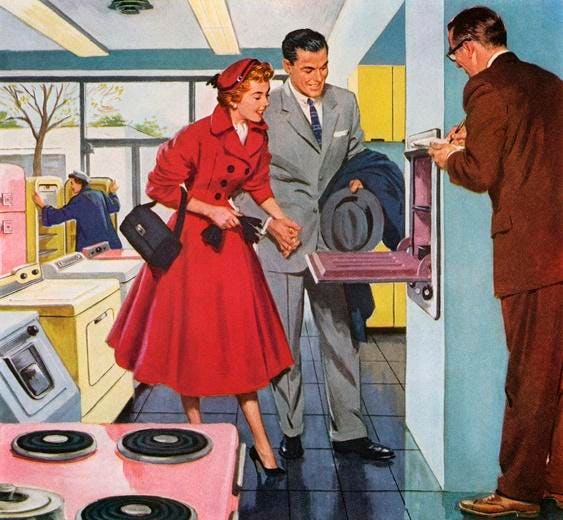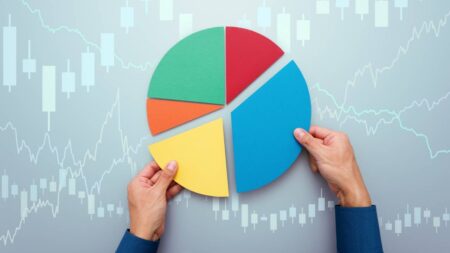It has been said that March either arrives like a lamb and goes out like a lion or arrives like a lion and goes out like a lamb. Although this adage is largely weather-related and highly debatable depending upon where you live, we here at The Spending Breakdown thought it might be fun to co-opt this theory and apply it to consumer behavior according to recent Census Bureau retail results. In keeping with that theme, we wondered aloud if consumers acted more like lions (bullish) or lambs (bearish) in the third month/finale of Q1 this year. And, importantly, what did consumers buy in March?
The latest numbers came in on April 15. First hints of the March Sales for Retail and Food Services report generally pointed to an overall more lion-esque attitude coming from consumers, who piled $709.6 billion into spending during March, up from $704.5 billion in February.
A robust macro overview had experts excited. Chip West, retail and consumer expert at Vericast, remarked that the spike in spending was more than just better-than-expected. It came in at “more than double what many economists had forecasted,” he wrote.
Sam Millette, senior investment strategist for Commonwealth Financial Network, remarked, “Retail sales growth came in above economist estimates in March, signaling resilient consumer demand during the month.” Similarly, Jamie Cox, managing partner at Harris Financial, reported, “The consumer is consuming a lot. If you were looking for an economic slowdown, you’re not getting it.”
However, not all groups fared equally this time. Results still vary by category. Let’s take a closer look:
Up first, let’s examine where consumers spent regarding their homes. With the first whispers of spring in the air, it will come as no surprise to some that consumers went all in on building materials and garden supplies, edging the total up to $40,881 billion, up slightly from $40,661 billion in February. Other home-related categories didn’t fare as well, though. Furniture and home furnishings, for instance, declined slightly to $10,678 billion from $10,712 billion while electronics and appliances slid to $7,635 billion from $7,729 billion. Neil Saunders remarked that “the sluggish housing market is still sapping demand, as is weaker confidence in making big-ticket purchases.”Regarding vehicles, March proved to be another mixed bag. Consumers spent less on new and used cars or for repairs on their current vehicles, as reflected by the motor vehicle and parts dealers category, which fell to $134,058 billion from $135,013 billion in February. However, gas stations rose to $54,623 billion from $53,517 billion. Fueling up one’s car has always been a hot-button issue ripe for discussion and March is no exception. Chip West noted that inflation “remains stubborn,” and added, “Historically, a rise in gasoline prices also helps propel retail spending. As we move into spring and summer, an increase in travel should impact gasoline sales/prices as well.”
Food is one category with more spending across the board in March. Consumers ate both in-home and either took away from or dined in restaurants, making grocery stores and dining and drinking establishments winners this time around. Food and beverage stores rose to $83,047 billion from $82,654 billion, while dining and drinking establishments rose to $93,728 billion from $93,365 billion.
Nonstore retailers, a category we don’t often summarize for The Spending Breakdown, also rose in March, piquing our interest. Importantly, this category includes, “Mail order houses, vending machine operators, home delivery sales, door-to-door sales, party plan sales, electronic shopping, and sales through portable stalls [like] street vendors [minus food]” according to the NAICS Association, which tracks these categories. Interestingly, nonstore retailers rose to $122,973 billion from $119,697 billion.
And finally, in the look-good-feel-good departments, results were mixed. Health and personal care rose ever so slightly to $36,248 billion from $36,084 billion, while clothing and accessories fell to $26,073 billion from $26,462 billion. General merchandise stores rose to $75,195 billion from $74,387 billion while department stores, a subgroup within the general merchandise category, fell to $10,923 billion from $11,044 billion.
It’s undeniable that March produced some positive results, yet commentary wasn’t devoid of some critical points to ponder. Chip West cautioned, “With consumers’ savings down and credit up, it might not be a good thing in the end for consumers.”
Chris Zaccarelli, chief investment officer for Independent Advisor Alliance, wrote, “The markets have been buoyed by strong corporate profits and the elixir of lower rates, but it seems like those two things are increasingly at odds with each other, so we would exercise some caution in the near term.”
Similarly, Neil Saunders, managing director of GlobalData, mused, “Overall, March continues to point to a reasonable year for retail. However signs of a more constrained consumer continue to abound beneath the headline numbers.”
April retail sales results are expected to arrive on May 15 and will give some clues (we hope) about spending during spring break and weather-related trends that tie into springtime (we are, of course, looking at you, garden supplies!)
Read the full article here
















